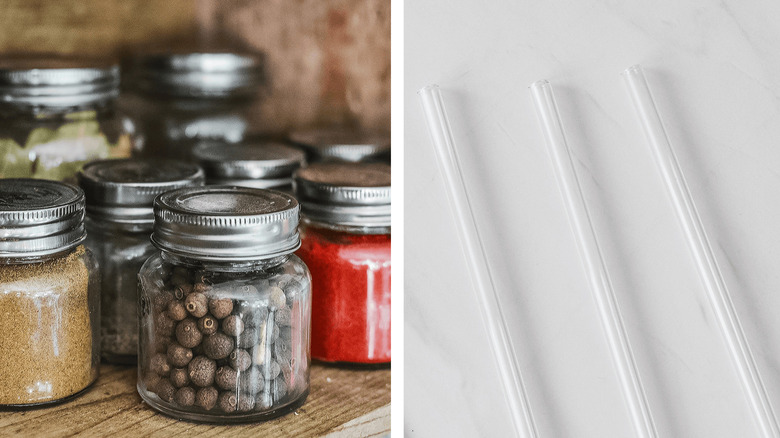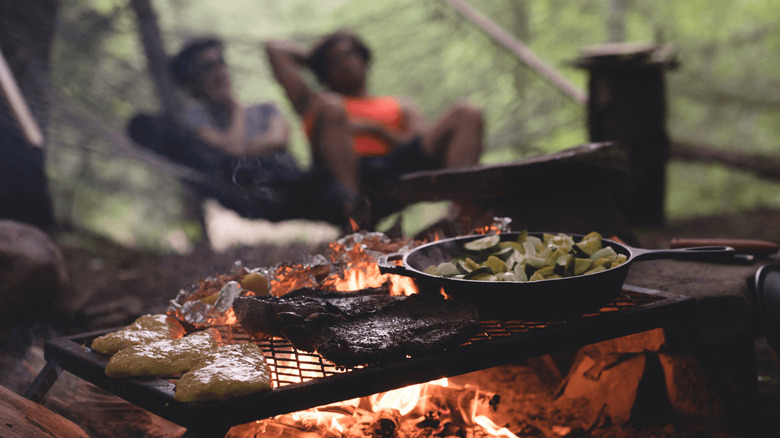Travel Guides Outdoor Adventures Camping
Myles Tan/Unsplash
Hilary I. Lebow
There’s nothing quite like cooking your favorite comfort foods over an open campfire in the wilderness. But it’s all too easy to forget to pack a few little spices that would take your meals to the next level, like a generous dash of cinnamon over some morning oats or zesty garlic salt sprinkled over a fire-roasted chicken breast.
If you have a few plastic straws sitting in your kitchen cabinet at home, you can easily fashion a simple DIY spice holder before you leave for your camping trip. This lightweight, portable, space-saving hack will keep your campfire food top-notch without cluttering your campfire kit with spice bottles. Better still, a straw can also double as an olive oil holder, ensuring that your food is just as tasty on the grill as it is at home. There’s no limit to how many spice and oil straws you can bring, so long as you have room for them in your camping kit. Some of the best spices for your camping kit are salt, pepper, garlic powder, onion powder, cayenne pepper, cinnamon, and your favorite cooking oil.
How to make a straw spice holder

Pixabay/Pexels
To put together your spice kit, gather these items from your kitchen: spices, a handful of plastic straws, a funnel, a Sharpie marker, some scotch tape, and a sandwich-size plastic bag. Clear plastic straws are best for this project, so you can better see the contents inside each one, especially at night around a campfire.
Take a straw and fold the end 1/4 inch. Secure the fold with a piece of scotch tape and create a seal. Use the funnel and pour your desired spice from the bottle into the straw. Leave room at the top — another 1/4 inch — and create a second seal with tape. When you’re done, label each straw with a Sharpie marker and load them into the sandwich-sized plastic bag. You’ll soon realize that this is one of those camping essentials you shouldn’t leave home without.
If you don’t have tape, you can use a lighter instead. Heat the plastic on each end then carefully press it together with your fingers (gloved, of course). Or, once you’ve successfully started a campfire, you can briefly use the heat to melt the plastic, though you could risk burning your spices or your fingers. Do be careful and don’t forget to safely put out your fire with water or dirt (per the National Park Service) before you go to bed.

